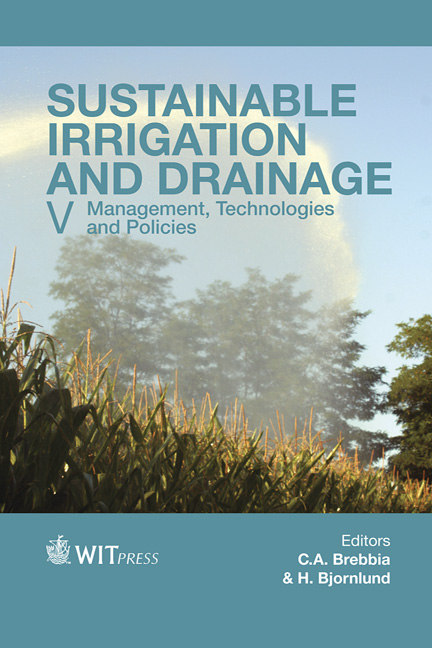Rain Harvesting And Stream Storage For Supplementary Irrigation To Rain-fed Paddy Schemes: A Case Study Of Selapon Paddy Scheme
Price
Free (open access)
Transaction
Volume
185
Pages
9
Page Range
133 - 141
Published
2014
Size
749 kb
Paper DOI
10.2495/SI140131
Copyright
WIT Press
Author(s)
K. B. M. Shafiuddin
Abstract
Brunei Darussalam is a fairly hilly country in the equatorial Borneo Island of Asia; it is green and rugged, having hot and humid weather with valleys and meadows suitable for paddy cultivation. The country enjoys moderate seasonal rainfall roughly in the months of September to December, ideal for rain-fed paddy cultivation. A crash program of “Grow More Food” has been undertaken presently to achieve food security by 2020. The Selapon Paddy Scheme (SPS) is a rain-fed paddy project in the district of Temburong in Brunei. Although there is a perennial stream, named Sg. Apoi, flowing adjacent to the scheme area, it suffers from lack of water during a drought situation in between two rainfall events. Heavy flash flow generated in the hilly catchment flows down the stream untapped and gets lost in the sea while a nearby paddy scheme suffers from lack of irrigation water. This scenario needs to be reversed to make the best use of rainwater stream flow, a scarce resource, by harvesting and on-stream storage. SPS has great potential to be converted into a fully irrigated paddy project by providing supplementary irrigation. This paper focuses on a study of the SPS at pre-feasibility level, and investigates the possibility of harvesting the flash flow for the abstraction and diversion for supplementary irrigation by gravity or pump, or acombination of both. Findings suggest that a pump station could be the best alternative of water abstraction from the stream and intermittent storage in a service reservoir wherefrom irrigation mains and drainage network would provide supplementary irrigation to the field by gravity. If the drought situation worsens, a stand-by option would be kept for sub-irrigation by controlled drainage using the irrigation and drainage network for channel retention and structural control of ground water table in the scheme area. This option will save the crop development from wilting during periods of extreme drought.
Keywords
supplementary irrigation, rain-fed paddy, drought, controlled drainage, wilting





